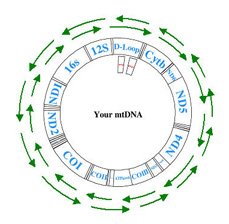Sunday, September 24, 2006
Sunday funnies
We have a new member! Kenneth R. Berry, who has previously tested with Oxford Ancestors (10 markers) and based on that appears to possibly match the Culpeper Co. Berry family, has ordered his 67 marker test! He is Y-DNA Participant #80 and the 84th member of our Project.
If he does, in fact, turn out to be a Culpeper Co. Berry that family will have some interesting connections to explore. Only two of the seven trace to a common ancestor. Two of the seven have tested 25 markers, two have tested 37 and three will have tested 67 markers.
Ah, yes. Larry, #9, did confirm his pedigree mentioned in yesterday's post and his new SMGF markers have been posted to the yResults page.
In addition, results seem to be starting to arrive from Argus BioSciences. I wrote them again the other day for my monthly inquiry about my test (order #28 submitted May 16, 2006) and Dr. Whyte replied, "I hope to clear the entire backlog in two weeks or so. Some samples are delayed because the quality of the sequence is very good, but not excellent, in the region around polyC tracts. We work hard to ensure that we have excellent sequencing reads in both directions, so it takes longer than we would like. I hope you can be patient with us a bit longer." And I have, in fact, started seeing reports of folks having received results. Not mine, yet, but hopefully soon.
On the subject of Argus BioSciences, I noticed that they have now announced that their DNA analysis of the entire mitochondrial genome (16,569 bases) is now available at an introductory price of $345. This includes sequence data for the hypervariable region as well as the coding region as illustrated by this diagram from their website -

You will recall that the test that I ordered, and which is still available for $75, was an analysis of the region containing the mitochondrial D-loop, including hypervariable regions HVR1 and HVR2, a total of 1145 base pairs as illustrated by this diagram of theirs -
 This is the typical 'full' test offered by most other labs as including hypervariable regions HVR1, HVR2 and HVR3.
This is the typical 'full' test offered by most other labs as including hypervariable regions HVR1, HVR2 and HVR3.

0 Comments:
Post a Comment
<< Home